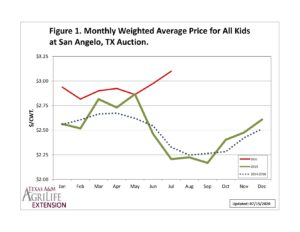A New Normal
It is hard to believe that just 4 months ago, our world was turned upside down due to the COVID-19 virus and efforts to stop the spread of the virus. I hope that none whom are reading this article have had serious health complications due to this virus. While, we may agree or disagree with how our local, state, and national government are handling the situation, I think we can all agree that there is no going back to the way things were.
So, this begs the question “What will our new normal look like?” It is a question that I ponder frequently, and I am curious to see how this all unfolds. I am an eternal optimist, maybe one of my faults. Regardless, I believe we are going to look back and wonder why we did not make some of these changes sooner. This new world if forcing us to do things that we thought were impossible before.
It easy to overlook positive trends when the news is crowded with angst and concern. According to data published online by Bill Thompson, Texas A&M AgriLife Extension Economist in San Angelo, most all classes of sheep and goats are selling well above last year and 5-year averages. Wool and mohair have not fared as well. Likely because they are tied to international trade issues more than the local live animal trade.
Why has the local sheep and goat markets have remained strong while, other livestock commodities have drop significantly? Did the American consumer wake up to the high quality protein provided by sheep and goats? It will take time for the data on lamb and meat goat consumption to be generated, but I highly doubt much has changed. I tend to think that the secret to the sheep and goat market is diversity.
To be clear, there have been substantial drops in the traditional lamb market due to COVID 19 but most Texas sheep producers do not market to this trade. The non-traditional light weight lamb trade is holding strong and the meat goat trade has exploded.
Now, back to diversity. The non-traditional trade has a diverse consumer base and a diverse supply chain. Whereas, traditional meat industries have consolidated meat packing, processing, and distribution into a few major facilities that are large and highly efficient. When, a mega-packer has to shut down it can send shock waves throughout the industry.
I am not advocating for one or the other. If possible, it would be ideal to have some of both. We need small packers to support the local meat trade. We also need major packers to efficiently supply product from coast-to-coast to complete with imports. But the reality is we need lamb and goat demand to continue to grow so that both small and major packers can get the volume to keep the doors open.
It is estimated that there are a quarter million sheep and goat farms/ranchers in the US. If every person that raised sheep and goats promoted consumption of lamb and goat meat to their friends, family, and local community it would be one of the largest sales forces of any product. In my opinion, we would have a hard time raising enough product to meet the US demand if we took this charge seriously.
If you think I am wrong, I challenge you to one question “Beef: It’s What’s for ____.” Most every farmer and ranchers knows this marketing campaign and they wear it with pride. But American farmers and rancher rarely show the same kind of pride when they promote lamb or goat meat. Why not?
To provide feedback on this article or request topics for future articles, contact me at reid.redden@ag.tamu.edu or 325-657-7324. For general questions about sheep and goats, contact your local Texas A&M AgriLife Extension Service county office. If they can’t answer your question, they have access to someone who can.
